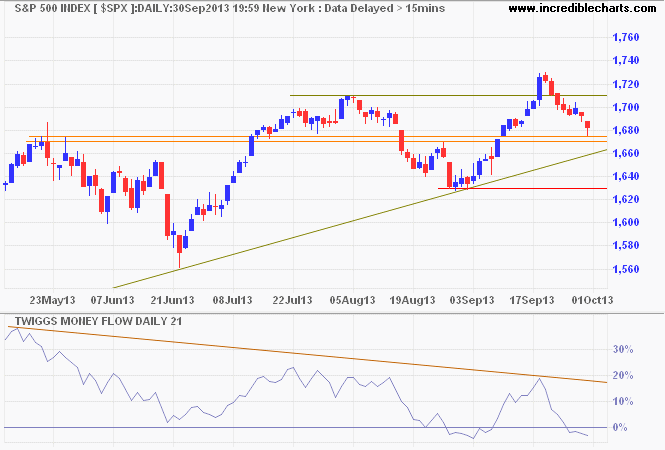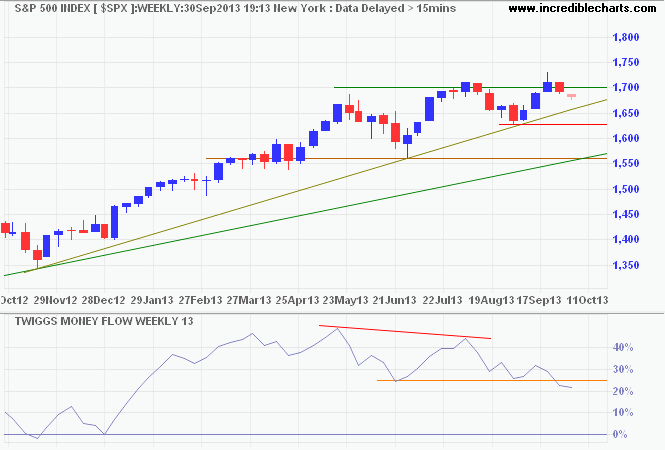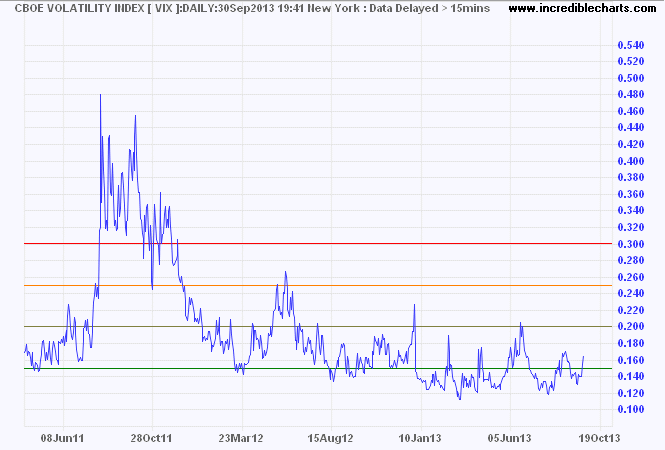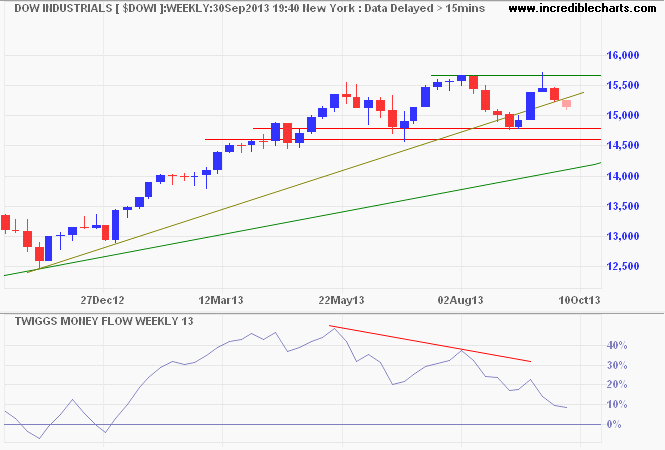Short-term support for S&P 500 but long-term bearish
By Colin Twiggs
October 1st, 2013 3:00 am EDT (5:00 pm AET)
These extracts from my trading diary are for educational purposes. Any advice contained therein is provided for the general information of readers and does not have regard to any particular person's investment objectives, financial situation or needs and must not be construed as advice to buy, sell, hold or otherwise deal with any securities or other investments. Accordingly, no reader should act on the basis of any information contained therein without first having consulted a suitably qualified financial advisor. Full terms and conditions can be found at Terms of Use.
The September quarter-end often heralds a correction as fund managers re-balance their portfolios and shed under-performing stocks.
The S&P 500 is testing support at the May high of 1675 on the daily chart. The long tail on Monday's candle indicates short-term buying support, but bearish divergence on 21-day Twiggs Money Flow warns of medium-term selling pressure. Breach of support and the (secondary) rising trendline would signal a test of primary support at 1625.

Selling pressure is also evident on the weekly chart, where a similar divergence warns of a primary reversal. This is a relatively weak signal, with 13-week Twiggs Money Flow elevated well above zero and primary support some way above the long-term rising trendline. Failure of support at 1625 would signal a reversal, but it may be prudent to wait for confirmation from the long-term trendline or other major indexes.

* Target calculation: 1700 + ( 1700 - 1550 ) = 1850
VIX crossed to above 15, but still indicates relatively low market risk.

Dow Jones Industrial Average broke its (secondary) rising trendline, signaling a test of primary support at 14800. Bearish divergence on 13-week Twiggs Money Flow warns of a reversal and breach of 14800 would confirm. Recovery above 15660 is unlikely, but would indicate a fresh advance.

I don't think traders can follow rules for very long unless they reflect their own trading style. Eventually, a breaking point is reached and the trader has to quit or change, or find a new set of rules he can follow. This seems to be part of the process of evolution and growth of a trader.
~ Ed Seykota

Author: Colin Twiggs is a former investment banker with almost 40 years of experience in financial markets. He co-founded Incredible Charts and writes the popular Trading Diary and Patient Investor newsletters.
Using a top-down approach, Colin identifies key macro trends in the global economy before evaluating selected opportunities using a combination of fundamental and technical analysis.
Focusing on interest rates and financial market liquidity as primary drivers of the economic cycle, he warned of the 2008/2009 and 2020 bear markets well ahead of actual events.
He founded PVT Capital (AFSL No. 546090) in May 2023, which offers investment strategy and advice to wholesale clients.
